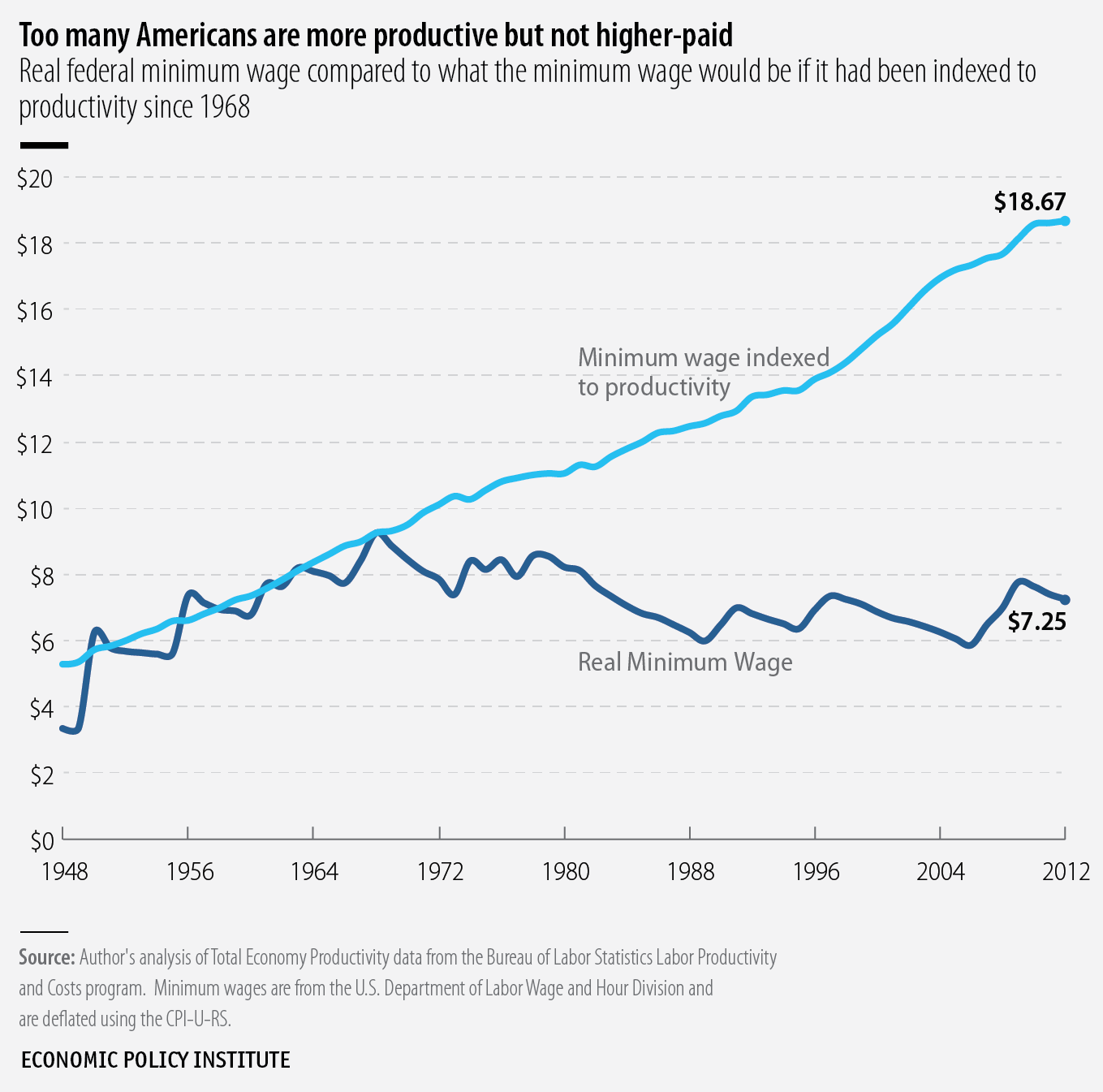The figure shows the real (i.e., inflation-adjusted) value of the minimum wage, plus what the minimum wage would be if it had kept pace with productivity growth since 1968, as it did for the two decades prior. If the minimum wage had kept up with productivity growth over this period, it would now be $18.67 per hour. That sounds shockingly high—it is two-and-a-half times as high as the current minimum wage and is actually higher than the median wage, which is $16.30 per hour. But it’s important to keep in mind that the primary reason a minimum wage of $18.67 sounds so high today is because the wages of most workers are so low. Most workers have not reaped the benefits of productivity growth for the last four decades. If the median wage had kept pace with productivity growth over the last 40 years, it would now be $28.42 instead of $16.30. In other words, an $18.67 minimum wage sounds shockingly high because the already affluent have captured most of the economic growth in the last 40 years, not because the economy hasn’t seen the kind of productivity growth consistent with that kind of minimum wage growth.
Of course, no one is suggesting a current minimum wage of $18.67 per hour. But this comparison does underscore the fact that the proposal by Senator Tom Harkin (D-IA) and Representative George Miller (D-CA) to raise the minimum wage to $10.10 by 2015 is a modest proposal indeed. Further, this recent EPI analysis shows that across the country families living on minimum-wage jobs are unable to make ends meet, more proof that an increase is necessary. Also, visit EPI’s new site, inequality.is, which details how wage growth stagnation has contributed to the rise of inequality.

